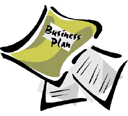Market research – Why?
Regardless of how good your product and your service is, your business won’t be successful without effective marketing of your products or services. Your marketing efforts begin with careful, systematic approach to research.
 You may feel that you understand your business thoroughly, but it is dangerous to assume that you know everything about your intended market. Market research helps you determine that you’re on the right track. This process of creating your business plan is a great opportunity to uncover data and to question your marketing assumptions. Your time will be well spent.
You may feel that you understand your business thoroughly, but it is dangerous to assume that you know everything about your intended market. Market research helps you determine that you’re on the right track. This process of creating your business plan is a great opportunity to uncover data and to question your marketing assumptions. Your time will be well spent.
Market research – How?
There are two kinds of market research: primary and secondary.
Primary research involves gathering your own data. For example, you could use chamber of commerce information or yellow pages to identify competitors, conduct your own surveys or focus-group interviews to learn about consumer preferences, or do your own traffic count at a proposed location. Professional market research can be very costly, but there are many books that show small business owners how to do effective research themselves.
Secondary research means using already published information such as industry profiles, trade journals, newspapers, magazines, census data, and demographic profiles. This information is readily available in public libraries, industry associations, from vendors who sell to your industry, and from government agencies.
Start with your local library. Most librarians are happy to help you work through the business data collection. You will be amazed at what is there. There are more online sources than you could possibly use. Your chamber of commerce has good information on the local area. Trade associations and trade publications also offer excellent industry-specific data.
Be as specific as possible in your marketing plan; give statistics, numbers, and sources. The marketing plan will be the foundation for later sales projections.
Economics
Facts about your industry:
What is the total size of the market for your goods and services?
What percent share of the market will you have? (This is significant if you think you will be a major factor in the market.)
What is the current demand in your target market?
What are the current trends in the target market-growth trends, trends in consumer preferences, and trends in product development?
What is the potential for growth and opportunity for a business of your size?
What possible barriers will you face in entering this market with your new company? Some typical barriers are:
- High capital investment
- High production costs
- High marketing costs
- Union costs
- Shipping costs
- Consumer acceptance and brand recognition
- Training costs
- Unique technology and patent application
- Tariff barriers and quotas
And of course, how will you overcome the barriers?
How could the following changes affect your company?
- Economy
- Technology
- Government regulations
- Industry
Products and Services
In the Products and Services section, you described your products and services as you see them. Now describe them from your customers’ point of view.
Features & Benefits
List all of your major products or services.
For each product or service:
- Describe the most important features. What is special about it?
- Describe the benefits. That is, what will the product do for the customer?
There is quite a bit of difference between features and benefits, and how we think about them. For example, a feature of a car is that it uses unleaded gas and has a six speed transmission. The benefits are that the car can accelerate rapidly and gets 25 mpg. You build features into your product so that you can sell the benefits.
What after-sale services are you offering? Some examples are delivery, warranty, service contracts, support, follow-up, and refund policy.
Customers
Identify your targeted customers – what are your customers like? What are their age, gender, buying characteristics, and their geographic locations, and any other characteristics that are relevant to your sales or marketing efforts?
Of course, your description will change depending on whether you plan to sell to other businesses or directly to consumers. If you sell a consumer product, but sell it through a channel of distributors, wholesalers, and retailers, you must carefully analyze both the end consumer and the middleman businesses to which you sell.
You may have more than one customer group. Identify the most important groups. Then, for each customer group, construct what is called a demographic profile:
- Age
- Gender
- Where they live
- Average income level
- Social class and occupation
- Education
- Other (specific to your industry)
For business customers, the demographic factors might be:
- Industry (or portion of an industry)
- Location
- Size of company
- Quality, technology, and price preferences
- Other (specific to your industry)